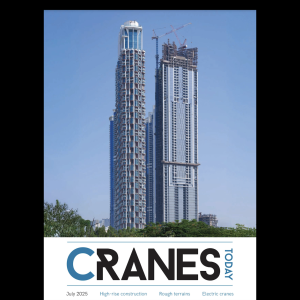A clear majority of respondents said that the equipment manufacturing sector is not getting the support it needs from the federal government as it continues to navigate the various challenges caused by the Covid-19 pandemic.
More than eight out of 10 respondents said they would like to see a significant investment in infrastructure to help keep equipment manufacturers in business during the crisis and set the stage for the economic recovery.
Government spending on infrastructure and other construction projects is an important vehicle for the recovery of an economy, as jobs will be created. In terms of the crane industry, it could have a positive effect on rental and sales.
As he set out a post-coronavirus recovery plan a few weeks ago, the UK’s Prime Minister Boris Johnson used a new slogan: “Build, Build, Build.”
Among the tools the government is using for the bouncing back of the economy is a £5bn investment in home building, hospital, school, bridge and road projects.
A radical reform to the planning system was also announced. New regulations will give greater freedom for buildings and land in UK’s town centres to change use without planning permission, and create new homes from the regeneration of vacant and redundant buildings. Under the new rules, existing commercial properties —including newly vacant shops — can be converted into residential housing more easily, in a move to kick start the construction industry and speed up rebuilding.
Private investment is also needed for the recovery, therefore providing incentives that would encourage it is important. This is one of the areas of focus of the European Union (EU) through various programmes. The EU leaders have also reached an agreement on a €750bn coronavirus pandemic recovery fund.
Through this fund and a multi-annual budget, the Union wants to help its members who have been hit (some more severely than others) from the pandemic. At the same time, it is aiming for a green and digital transition.
The investment in renewable energy has been strong in Europe for decades. Scandinavia is a region where there has been significant investment in onshore and offshore wind.
In this issue, you can read about two wind projects in Norway, included in a dedicated section on Scandinavia. This section comprises case studies of different lifting equipment from four countries of the region.
Wind energy applications are also discussed in another feature of the issue, the one on all terrains with capacities of 400t or higher. The importance of this market to the crane manufacturers is also illustrated by XCMG’s new 750t all terrain, which was designed especially for wind turbine maintenance work.
This issue also includes a feature article on the use of mini cranes and spider cranes for glazing and cladding. Julian Champkin finds that these machines are being deployed for some jobs previously carried out by tower cranes. Price, versatility, manoeuvrability, compactness and ease of operation are some of the benefits of these crane types.
Sotiris Kanaris, Editor
sotiris.kanaris@cranestodaymagazine.com






